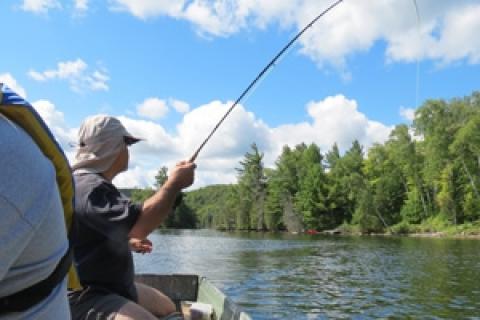
Because I live in a county that holds more than 650 lakes, I do a lot of still water fishing for bass and trout. The dramatic depths of these lakes, many of which surpass 100 feet, and the behavior of the fish at certain times of the year is the reason I use sink tip lines at lot. Good thing too, because it has upped my success rate considerably, especially when those fish aren't as surface oriented as I'd like.
Anyone who uses a sinking or sink tip line knows that you need a relatively short leader to mitigate hinging. Hinging is when the sinking fly line sinks faster than the fly at the end of the leader. It is an issue because it prevents you from feeling takes. And even if you saw the take, there's slack line between you and the fish, which means you've got to strip more line in and move the rod tip a greater distance before a solid hook set it possible.
The shorter the leader, the more direct the connection to the fly and the less this is an issue.
But what kind of leader is the question?
I've experimented a lot with leaders and sinking lines and have found that the ideal leader for me is a relatively simple one. It doesn't need to be tapered and doesn't have to be extremely fine either. In fact, a 6-foot level leader of 6-pound fluorocarbon does the job just fine. Tie directly to the fly.
I know it's not complicated and we, as fly anglers, somehow think it ought to be. After all, we've all seen complex leader formulas for short leader endorsed by legendary fly anglers. Heck, I've tried quite a few — and they work just fine.
I am not saying they don't have their places in some trout or bass waters. But the truth is, in many cases, a level piece of fluorocarbon no longer than 6 feet does the job just fine too.
A leader like this is turned over by most streamers and wet flies. It hinges very little and most fish are not shy of it. The only issue I've had is that some of the bigger rainbows on our lakes sometimes require me to up the poundage. But that's only because they strike and turn so hard that they'll break you off.
The really good part about this is that it saves a whole lot of money in leaders and leader material and it's quite effective when lake fishing with sinking or sink tip lines.
Go fine and far on and near the surface. That makes sense. But when you are fishing deeper, a short simple leader will do the job almost every time
- 7139 views

